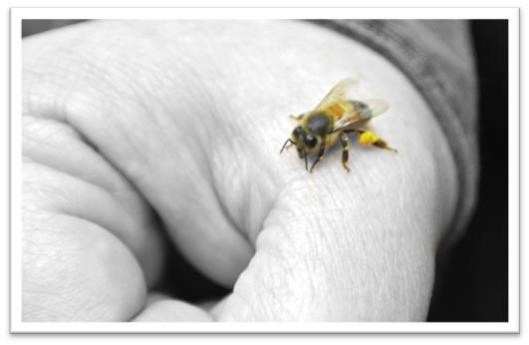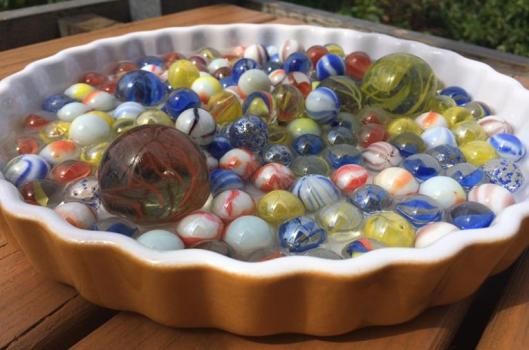The In The Hive tasks for Summer (June/July) are all about letting the girls do what they do, keep them and nearby humans safe and make some scholarly observations.
Worker Bee Tasks
- Inspect the Hives: When inspecting on a nice warm sunny afternoon, you should see evidence of the queen laying eggs, bees bringing in pollen and the honey stores building up.
- Watch for grasses, flowers etc. growing up and blocking the entrance to the hive. Remove them (I like to do this early in the morning before they are active).
- Take note of brood versus drone cells. Drone cells look like pencil erasers. You do not want a bunch of loafing drones. You need strong female workers to forage and raise brood. You might need replace your queen (or let the hive do it for you) if it looks like she is only laying drones.
- Do not forget to track your activities and observations!
Queen Bee Ideas
- Watch for swarms and booming hives: Activity and colony size pick up in spring and by now your hives should be pretty busy. Swarming is still a risk but perhaps a little less than springtime. Know what your local beekeeping organization has available as resources. In my neck of the woods, PSBA has a helpful page with a call list, tips and talking points (e.g. the bees aren’t angry).
- Do not panic if you see many bees covering the outside of the hive. They are probably just hot and helping to regulate the hive temperature. See this article on the importance of providing water for your bees – they could need a gallon or more a day!
- Know what nectars and pollens are available: Not all flowers and other plants produce nectar and the weather, especially Seattle rain, can often make it hard for the forager bees to get out – remember January, although for sure there is a much greater variety of flowers and plants this time of year. My lavender is in full swing but just like the past years, the honeybees do not frequent it, only the bumbles…. Here is what the science says about this, other than we do not live in Provence. Sigh.
- You have to eat, so make a honey recipe. Here is one of my most recent experiments.
Drone On
- Attend your local beekeeping organization meeting. Great way to stay on top of the bee season.
- Busy time of year for beeks!
Pollinator Champion
- Make a simple Bee Waterer: just place some marbles in a dish and fill with water (picture below). The bees will be able to land on the marbles and drink, without drowning. You can use rocks, pieces of cork, or sticks as well.
- Enjoy this quick video of a honey bee emerging from its cell.
Remember that while the Summer Solstice is the beginning of summer it is in a way the beginning of the end of bee season……
A swarm of bees in May is worth a load of hay; A swarm of bees in June is worth a silver spoon; A swarm of bees in July isn’t worth a fly.

